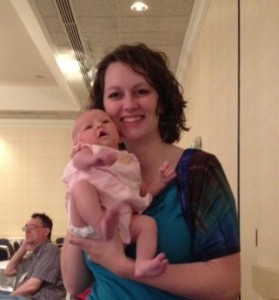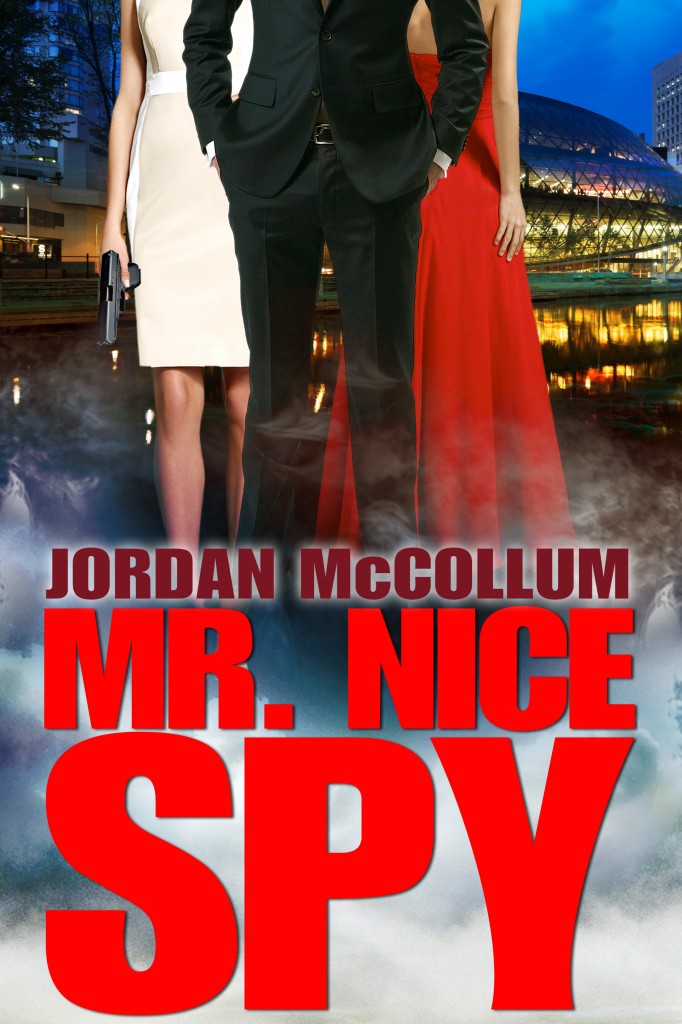Once upon a time, I must have held a subconscious belief that a “real” writer made their sentences work two and three times as hard. That’s probably true in a way—each action of a story, each scene and maybe each sentence can accomplish more than one thing.
 But instead, I took that to mean that the more complex a sentence, the better. I think the problematic present participial phrases we looked at last week can be a symptom of the same problem: trying to stuff too much into one sentence. (And also, trying to sound writerly.)
But instead, I took that to mean that the more complex a sentence, the better. I think the problematic present participial phrases we looked at last week can be a symptom of the same problem: trying to stuff too much into one sentence. (And also, trying to sound writerly.)
Learning my lesson
I’ve long been an avid reader of the blog edittorrent, run by editors Theresa Stevens and Alicia Rasley. Almost four years ago, they asked for victims volunteers for on-the-blog edits, and I signed up with a short sample, a few sentences that were giving some of my beta readers problems.
And Alicia told me exactly why (emphasis added):
Don’t make your reader work so hard to figure out what you’re getting at. Try writing it plainly first, to make sure you’re getting it across, then embellish. But really, I think you’re trying to do too much for one paragraph. This might not have bothered me in two paragraphs or three, if you took your time and really explored what was happening . . . . If that’s too attenuated, see what’s important to keep and make sure everything is clear.
Yes, sentences should work hard for us as writers and serve several purposes. But there’s a limit to how much you can pack into a sentence or paragraph and still be intelligible to readers.
Another really important point here is that dense (= packed) writing isn’t always better. Sometimes it makes the reader feel dense (= stupid). If something is really important to the story action or the character, often that weight should be matched by the amount of real estate that event gets.
Or as Alicia put it,
If it’s worth stating, . . . it’s worth developing or exemplifying or showing. . . .
I know I’m always saying, “Take it slow.” But don’t try to compress too much.
Now, if it had just been me, I probably would have dismissed this advice as a general principle, applying it only to this passage and skipping merrily along with my writing life. However, it seemed to me that one of the recurring themes in Alicia’s awesome line editing series was to slow down and draw out the implications and impact of events in our writing, really showcasing our characters.
Applying the special sauce
 These sample edits were done on a passage of 4 sentences:
These sample edits were done on a passage of 4 sentences:
How must the buildings that were so familiar she hardly noticed them look to Father O’Leary? Three years ago, she compared the Gothic chapel, its stone façade flanked by blazing maples in a carpet of lawn, to her parents’ church in city center. At the time, St. Adelaide seemed a suburban oasis; three weeks ago she was disabused of that notion.
“I’m sure it’ll get to feelin’ like home soon enough,” she murmured.
Along with other excellent feedback from Alicia & Theresa and other commentators, the passage in question eventually grew—the first paragraph (three sentences) expanded into three paragraphs (eight sentences):
He scanned the whole scene, as if surveying the squat brick school, the rectory, the Gothic chapel’s stone façade flanked by blazing maples in a carpet of lawn. The dismay in his expression dissolved with his satisfied nod. St. Adelaide must seem like a suburban oasis to him.
Three weeks ago, Molly had been disabused of that notion. Now the idyllic scene carried a sinister undertone so strong she couldn’t bear to look at it anymore. She hadn’t even noticed when the maples turned red.
Father O’Leary sighed and looked to her. How could she tell him the truth and shatter his illusion? “It’ll get to feelin’ like home soon enough,” she murmured.
I agreed that this event was important enough to give it more real estate in the book—but it’s not like I devoted an entire chapter to this. Just a few more sentences here made the passage clearer and gave it greater emotional impact.
Note that I decided the reference to the past (three years ago) was not actually worth including, since it distracted from the present—it wasn’t important enough to explore, and thus it probably wasn’t important enough to include.
What do you think? Have you ever overstuffed your sentences? Come share!
Photo credits: overstuffed beef ravioli—George Hatcher; red maple—Rudolf Ammann; both via Flickr/Creative Commons








 Sometimes we use phrases like “he thought” or “she knew” to reinforce the POV character’s connection with the thoughts in narration. But instead of drawing our readers’ attention to the character’s thoughts, too many of these phrases can draw attention to that scaffolding—the words that encase the character’s thoughts. Remember the example we used
Sometimes we use phrases like “he thought” or “she knew” to reinforce the POV character’s connection with the thoughts in narration. But instead of drawing our readers’ attention to the character’s thoughts, too many of these phrases can draw attention to that scaffolding—the words that encase the character’s thoughts. Remember the example we used  If you
If you 









